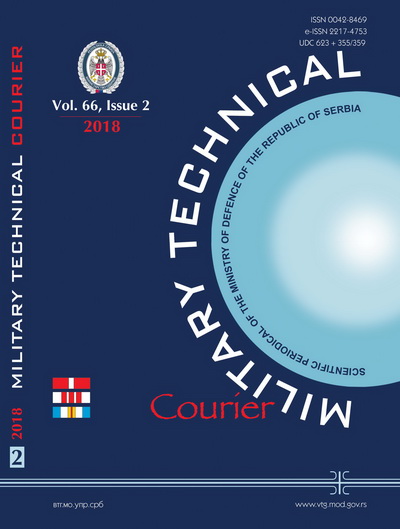Patent overview: Device for fingerprint identity guarantee
Abstract
The patent device named “Device for biometric identification of maternity” is a dual fingerprint scanner that provides data of mother and baby fingerprints at the very moment of birth and further guarantees the maternity of a newborn baby by generating a unique ID reference and encrypting that data with the highest level of protection. For the first time, we enrolled qualitative research that proves a baby’s identity at the very moment of birth based on the fingerprint minutiae. No one has done it until today! The realised technical solution scans, processes, stores, saves and encrypts personal data with one main purpose - to prove maternity of every newborn baby with 100% accuracy. By fingerprint scanning of both the mother and the baby’s fingerprints simultaneously at the very moment of birth, ID is generated and stored. This allays potential fear of babies being replaced. Every identity is guaranteed. By encrypting this data, the whole process is raised to the highest security and confidentiality levels in maternity wards worldwide. In each case, the fear that almost every mother has in this period is allayed as well as the question: “Is this my baby?”
References
Chungkeun, L., Hang, S.S., Jongchul, P. & Myoungho, L. 2012. The optimal attachment position for a fingertip photoplethysmographic sensor with low DC. IEEE Sens. J., 12(5), pp.1253-1254. Available at: http://dx.doi.org/10.1109/JSEN.2011.2164904.
Dahlen, H.G. & Caplice, S. 2014. What do midwives fear? Women and Birth, 27(4), pp.266-270. Available at: http://dx.doi.org/10.1016/j.wombi.2014.06.008.
Grzybowski, A. & Pietrzak, K. 2015. Jan Evangelista Purkynje (1787-1869): First to describe fingerprints. Clinics in Dermatology, 33(1), pp.117-121. Available at: https://doi.org/10.1016/j.clindermatol.2014.07.011.
Gutiérrez-Redomero, E., Rivaldería, N., Alonso-Rodríguez, C. & Sánchez-Andrés, Á. 2014. Assessment of the methodology for estimating ridge density in fingerprints and its forensic application. Science & justice, 54(3), pp.199-207. Available at: https://doi.org/10.1016/j.scijus.2013.11.004.
http://www.epo.org/index.html. Accessed: 01.10.2017.
http://www.zis.gov.rs/pocetna.1.html. Accessed: 01.10.2017.
http://neurotechnology.com. Accessed: 01.10.2017.
-IEEE, 2011. Using Fingerprint Authentication to Reduce System Security: An Empirical Study, pp.32-46. In: Security and Privacy (SP), IEEE Symposium, Berkeley(CA), 22-25 May. E-ISBN: 978-0-7695-4402-1.
Jain, A.K., Flynn, P. & Ross, A.A. (Ed.), 2008. Handbook of Biometrics. Springer US. Available at: https://doi.org/10.1007/978-0-387-71041-9.
Keith, M., Persaud, T.V.N. & Torchia, M. 2014. Before We Are Born, 9th ed. Elsevier UK / Saunders. ISBN: 9780323313377.
Lalovic, K., Andjelic, S. & Tot, I. 2017. How to guarantee baby identity based on fingerprint biometry. In: BISEC 2017 - IT Conference, Belgrade, October.
Lalović, K., Maček, N., Milosavljević, M., Veinović, M., Franc, I., Lalović, J. & Tot, I. 2016. Biometric Verification of Maternity and Identity Switch Prevention in Maternity Wards. Acta Polytechnica Hungarica, 13(5), pp.65-81. Available at: http://dx.doi.org/10.12700/APH.13.5.2016.5.4.
Lalović, K., Milosavljević, M., Tot, I., & Nemanja, M. 2015. Device for Biometric Verification of Maternity. Serbian Journal of Electrical Engineering, 12(3), pp.293-302. Available at: http://dx.doi.org/10.2298/SJEE1503293L.
-NIST, 2014. Fingerprint Compression. [Internet]. Available at: https://www.nist.gov/programs-projects/fingerprint-compression. Accessed: 10.10.2017.
Oaks, J.A., Was al-Khwarizmi an applied algebraist? [Internet]. Available at: http://pages.uindy.edu/~oaks/MHMC.htm. Accessed: 30.05.2008.
Proposed Creative Commons Copyright Notices
Proposed Policy for Military Technical Courier (Journals That Offer Open Access)
Authors who publish with this journal agree to the following terms:
Authors retain copyright and grant the journal right of first publication with the work simultaneously licensed under a Creative Commons Attribution License that allows others to share the work with an acknowledgement of the work's authorship and initial publication in this journal.
- Authors are able to enter into separate, additional contractual arrangements for the non-exclusive distribution of the journal's published version of the work (e.g., post it to an institutional repository or publish it in a book), with an acknowledgement of its initial publication in this journal.
- Authors are permitted and encouraged to post their work online (e.g., in institutional repositories or on their website) prior to and during the submission process, as it can lead to productive exchanges, as well as earlier and greater citation of published work (See The Effect of Open Access).

